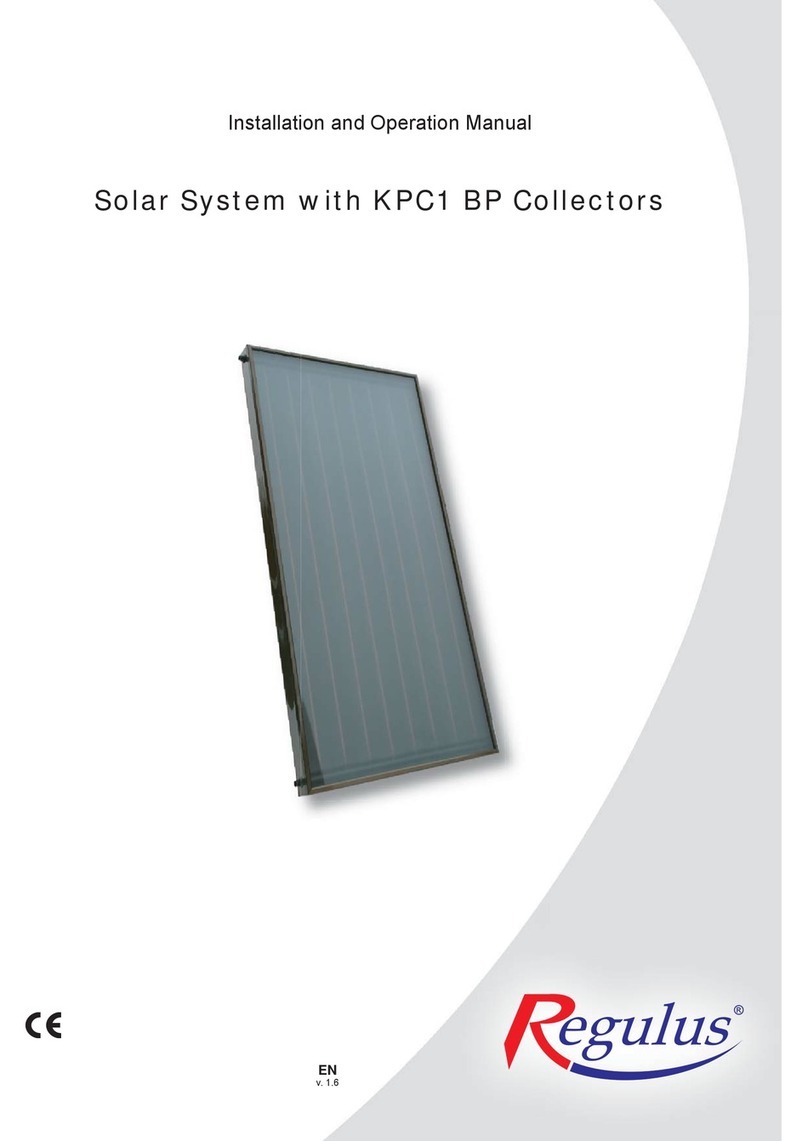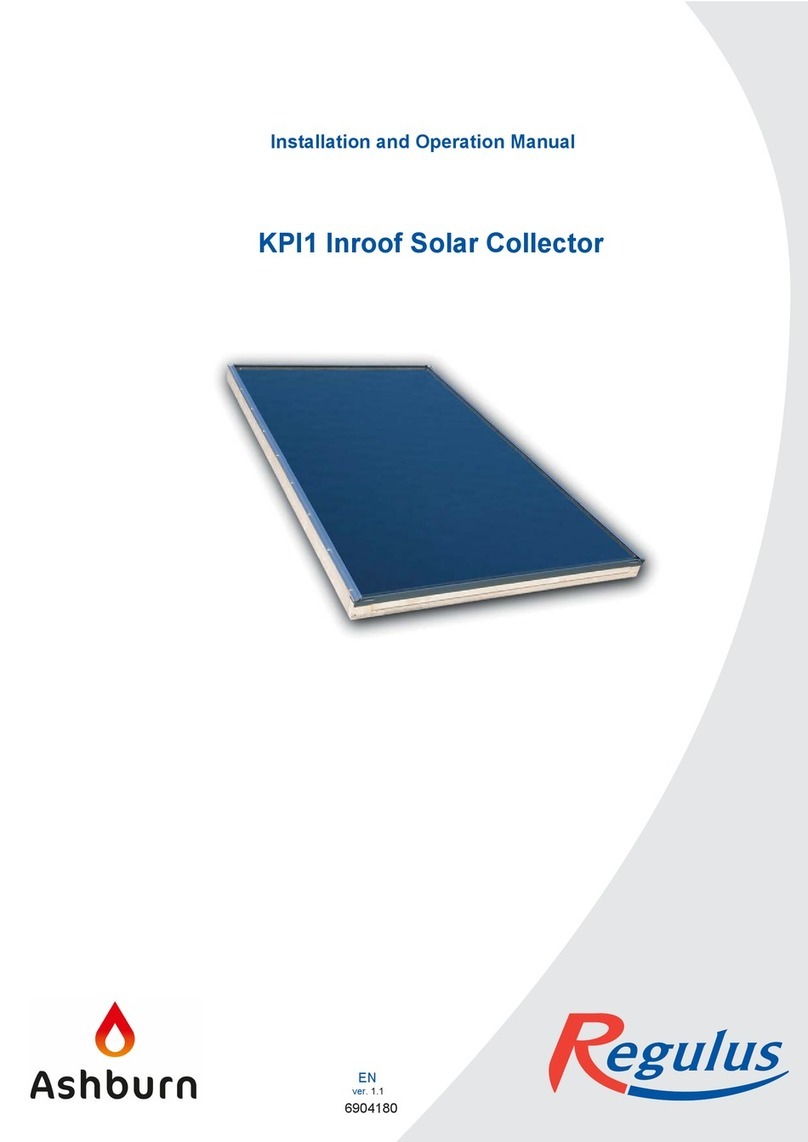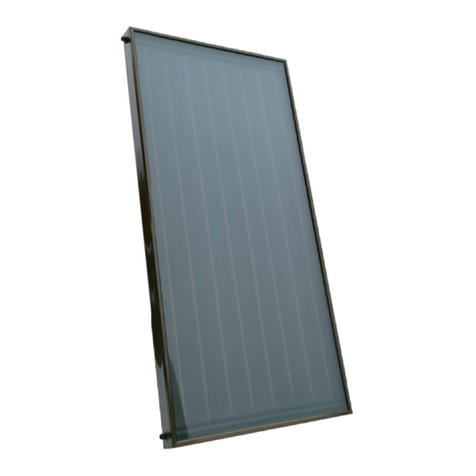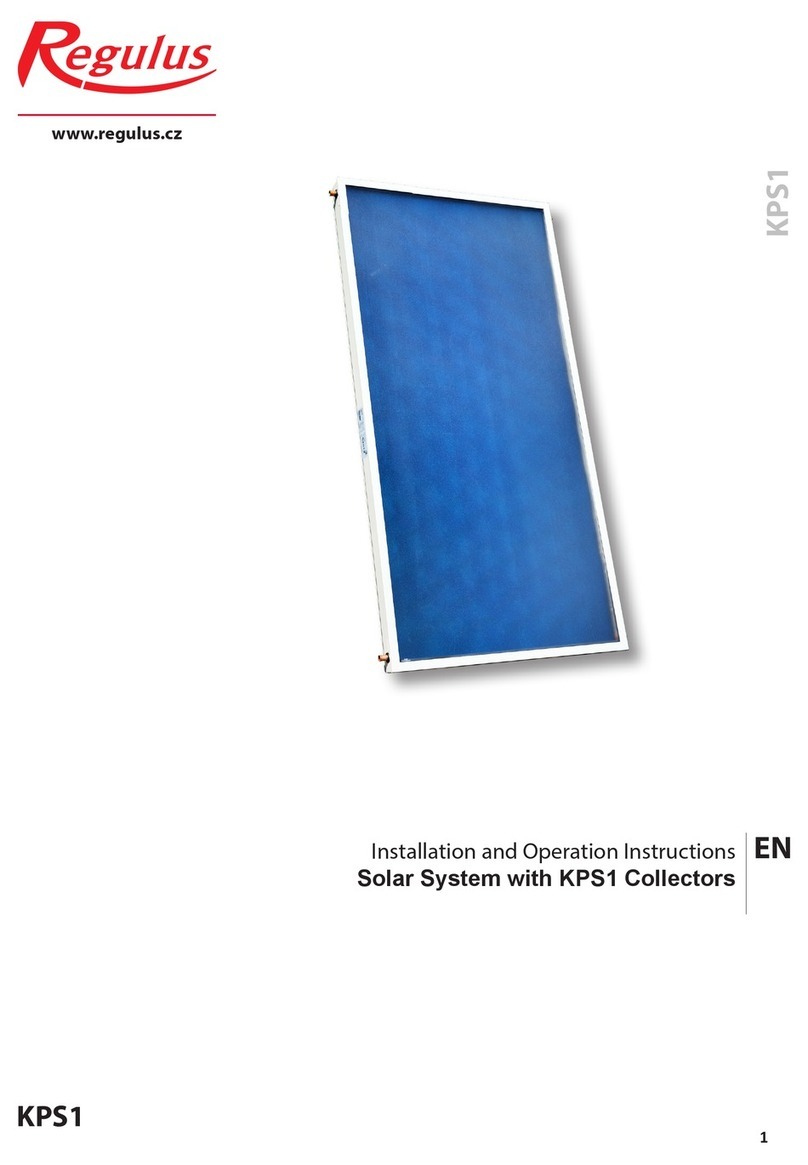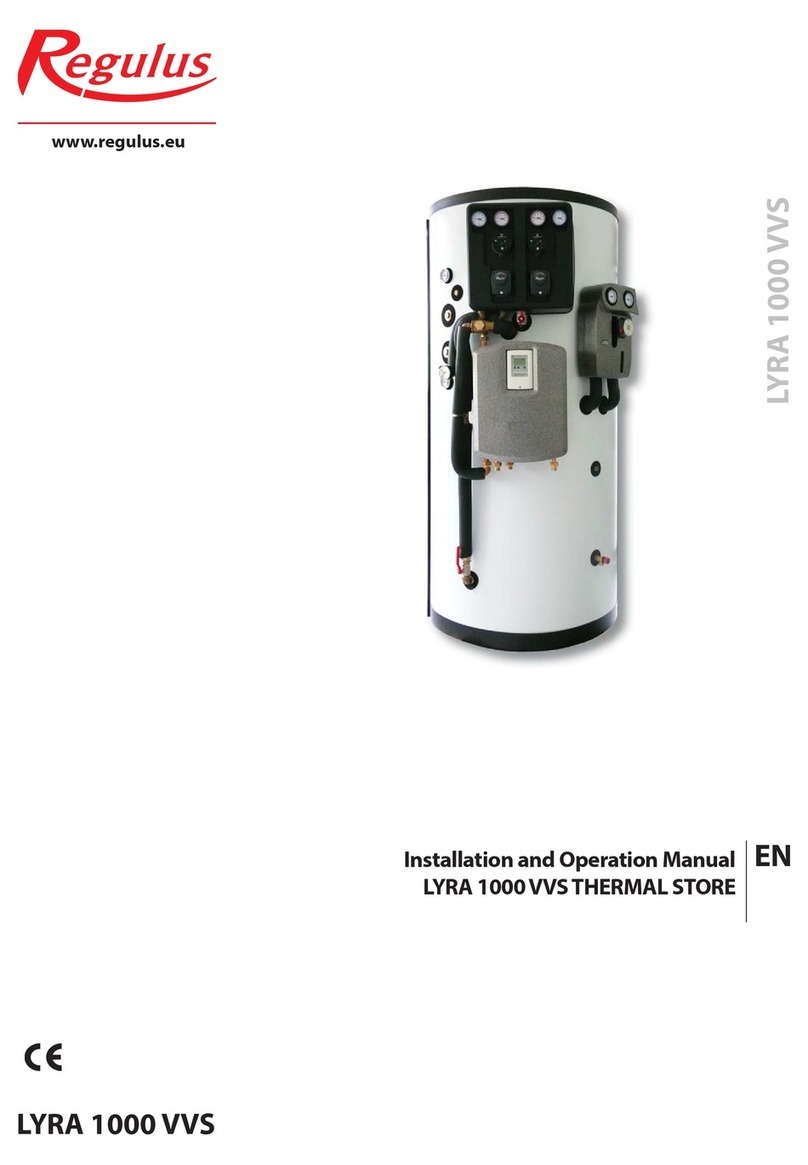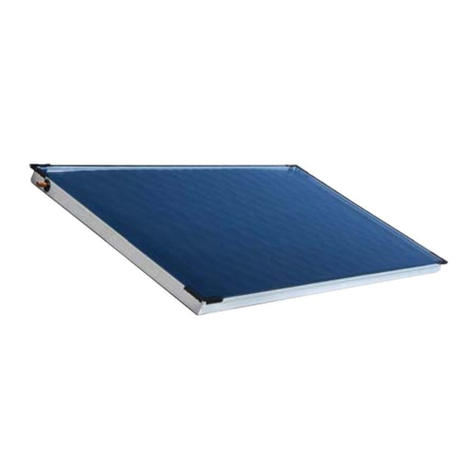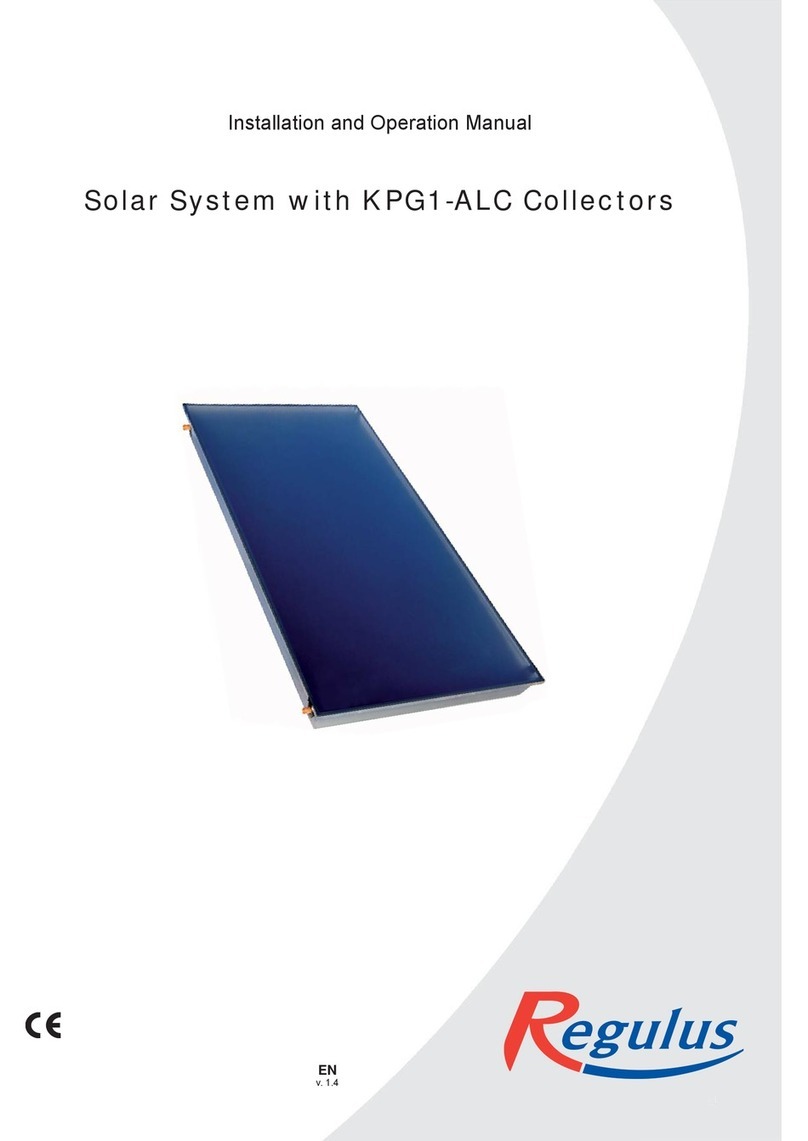
3
Collector description
REGULUS KPS11 Flat Plate Solar Collectors are
designed for solar domestic hot water heating (DHW),
backup- and pool heating with solar energy. Solar radi-
ation penetrates the glass and is intercepted by an ef-
cient absorption layer applied on an aluminum absorber.
The heat is then transferred into heat transfer uid. The
absorber is sealed in a compact frame with high quality
thermal insulation. The collectors are designed for year
round operation, that’s why they work in a separate pri-
mary circuit lled with antifreeze heat carrier.
The collectors are not intended for direct water
heating. If different heat transfer uid is used
than specied by the manufacturer, irreversible
damage to the collector may be done.
Transport, handling and storing
Collectors shall be transported in their original packing,
in upright position (standing on their shorter side) or lying
horizontal with glass upwards, stack of max. 10 pieces
on a pallet.
During handling the collector glass shall be always fac-
ing upwards.
Please check the condition of the collector upon re-
ception from your supplier or forwarder. Later claimed
mechanical damage (frame, glass, connection) will be
refused.
When stored, the collector shall not be exposed to rain
and its absorber exposed to solar radiation.
Scope of supply
1. KPS11 Collector
2. Instruction manual
3. Warranty Certicate
4. Commissioning form - info for the Manufacturer
General instructions for installation
The installation must be done by a trained worker or a
specialized company.
During installation and before commissioning, it is nec-
essary to cover collectors in order to avoid overheating
and possible burn injury to the installer.
Prior to installation, conditions set by the roong man-
ufacturer and the max. permissible roof load shall be
checked.
Mounting method for solar collectors shall always
respect local conditions, i.e. roof inclination and weath-
er inuence on the overall load on the collector. Kindly
consult the xing method with a structural statics expert.
During installation the collectors and accessories shall
be handled carefully. Defects caused by improper han-
dling or DIY installation are not cover by warranty.
Generally valid rules and standards for occupational
safety shall be respected during installation. This con-
cerns mainly technicians walking on a roof and the se-
curing the area against objects falling down from a roof.
Only REGULUS xing elements may be used. Other
xing elements may be used only with a written approval
from REGULUS company.
Collectors shall not be exposed to solar radiation until
commissioned. The absorption surface may get dam-
aged.
Collectors shall be installed and operated in compliance
with this Manual and with respective generally valid rules
and norms.
Collector placing
The collector must be placed outdoors. The glass
absorption surface should be orientated to South, with
deviations not over 45° (Southwest or Southeast). For a
year round operation the right inclination angle is 40°-
50°, for summer operation smaller inclination is better
(30°). The collector may be placed also vertically (90°
inclination, e.g. on a an outer wall) .
Collectors shall be installed as marked.
A collector inclination shall not be less than 20°.
On inclined roofs it is recommended to install
solar collectors as close to the roof ridge as
possible. Should this solution be impossible,
then protections against snow slide shall be
installed above the collectors.
The numbers of roof anchors shown in the Mounting Kits
for Fixing and Connecting Regulus Solar Collectors are
designed for the following load:
Max. permissible snow and wind load ≤ 1,8 kN/m2
Max. permissible wind load - negative pressure ≤ 1,0 kN/m2
The customer/user
shall be informed about this fact prior to starting installa-
tion of a solar system. If a higher load than shown above
is expected in the area in question, a statics expert shall
be consulted and more roof anchors designed, or other
measures taken that would ensure safe collector xing.
Regulus refuses any responsibility for damage caused
by wrong design of collector xing.
Lightning protection
Lightning protection is obligatory for solar systems.
When installed on a roof, collectors must be wired to
lightning protection equipment. Czech norm ČSN EN
62 305 shall be observed. For other countries check with
local authorities.
GENERAL INSTALLATION AND OPERATION INSTRUCTIONS






